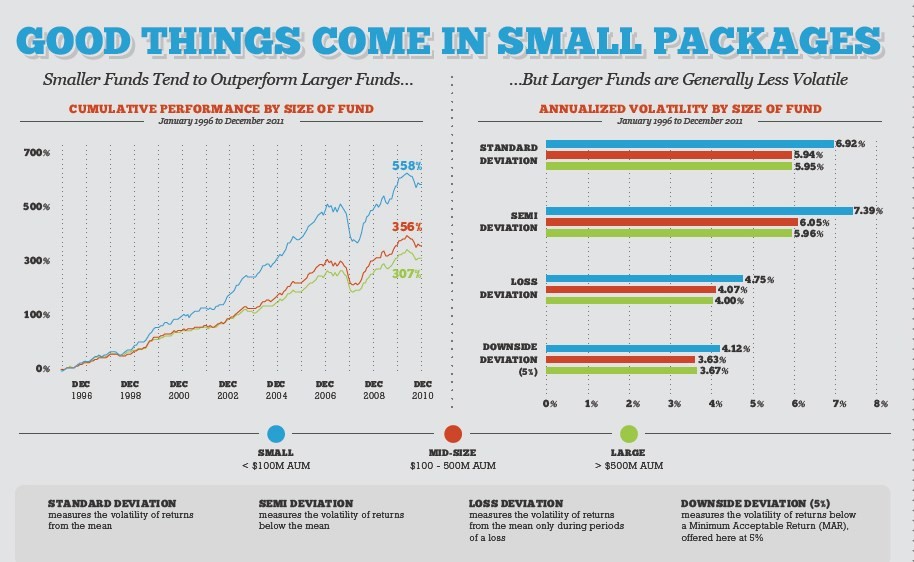History of Hedge Funds
Post on: 5 Апрель, 2015 No Comment

Albert Wislow Jones formed the first Hedge Fund in 1949, where the main investment strategy was to take hedged equity investments (Fung & Hsieh, 1999).
Winslow was able to eliminate some market risks by hedging (the act of removing risk), thus Hedge Funds became first well-known after an article in Fortune mentioning Jones’s fund significantly outperforming other Mutual Funds (Fung & Hsieh, 1999).
According to the authors, hedge fund’s popularity diminished in the bear markets of 1969-70 and 1973-4, and also a decade later in 1986, interest was revived by Robertson’s infamous Tiger Fund, which achieved compound annual returns of 43% for 6 years after all expenses.
Market timing, market analysis, going long and price/volume ratios was the several methods investigated by Jones. Jones detected that the outcomes of the predictions created by the analysis methods of the late 1940’s were not always accurate and decided to combine two methods in particular (Rapperport 2007).
Nevertheless, Alfred Jones was not the first investor to use a going long strategy. “Buy and hold” is a common investment strategy, in which the investor will purchase a security, commodity or any other sort of investment and will retain ownership of it until its price has risen high enough to sell it and to make a profit on capital gains (Jaffer 1998). This, along with diversification, is the recommended trading method according to the Efficient Markets Hypothesis.
Short-selling is also another type of strategy, whichis first borrowing a share that the investor does not possess and selling it, so, the investor buys it back shortly after. When the price of the buy-back and the borrowing fees are lower than the selling price, profits are made.
A. W. Jones set up the first hedge fund in 1949, however, there were others who preceded Jones. An investment fund that utilized long and short positions and charged an incentive fee was operated by Benjamin Graham, where he included a number of hedged and un-hedged strategies, such as convertible arbitrage and distressed securities. As it was more dynamic and versatile in its trading strategies, it became gradually widely accepted that Jones’s partnership should be considered the first hedge fund (Longo, 2009).
Jones structured his fund as a limited partnership to avoid the regulatory requirements of the US Investment Company Act of 1940. He specified that the general partner or fund manager, as compensation, would take 20% of the profits.
His investment approach involved leverage to magnify returns while at the same time using short selling of stocks to reduce market risk. His fund was market neutral because his aim was to hedge out market risk by taking as many short positions as long positions.
The number of hedge funds, and the total assets under management began to increase significantly during the 1990s, because in its early years, the hedge fund industry remained relatively small and attracted little publicity, and the rate of growth has accelerated considerably in the last few years.
The two reasons for this growth are firstly, the attractiveness of the hedge fund remuneration structure, secondly, the freedom of investing in a hedge fund that is not being constrained by any regulations.
According to Ineichen and Silberstein (2008) the hedge fund industry comprised in total, with more than 9,000 funds, an alleged AUM of more than US $2.5 trillion.
Often family or friends of the fund managers trying to keep a private investment partnership approach, have been high net worth individuals.
The first institutional investors to start investing in hedge funds, followed by a broad array of other institutional investors such as i.e. large pension funds, was US endowments such as Ivy League universities.
The institutionalization of the hedge fund industry as institutional investors tend to favour bigger funds with well-developed compliance and risk management functions, where the result has been the concentration among a small number of big managers of a significant proportion of hedge fund assets.
As we can see in Eurekahedge website (2013), Hedge funds started off 2013 with the industry delivering excellent returns and also attracting capital from investors. Presently is set to hit its historical high in coming months and the size of the industry stands just short of US$1.8 trillion.
Over the last 13 years the sector has experienced a period of tremendous growth, a downturn and a rebound. In year 2000 total assets in the global hedge fund industry managed by 2840 funds stood at US$335 billion. The industry’s asset base grew by almost 500% to cross US$1.95 trillion by mid-2008, over the seven and a half years following 2000. The total fund population also increased by nearly 3.5 times, during this period.
In the last eight months of 2009, the strong rallies in global markets and the subsequent positive asset flows in 2010 supported the industry’s recovery but concerns about the global economy and the European debt crisis stalled this recovery in 2011 and most of 2012.
In 2012, the industry witnessed a net increase in assets under management (AUM) through strong performance performance-based gains of US$72.8 billion, despite net negative asset flows on this date.

Industry growth since 1999
Many studies about performance measurement with hedge funds have been published since the late nineties, such as Ackermann, McEnally and Ravenscraft (1999) and Liang (2000, 2001) and others.
Powered by SEO
Characteristics of a Hedge Funds
A.W. Jones wrote an article about his investment style Fashion in Forecasting in Fortune, March 1949, 88, 186
Ineichen A. and Silberstein K. 2008, “AIMA’s Roadmap to Hedge Funds”, Alternative Investment Management Association, London
Jaffer, S. Maumus O. Meaden, N. Rizzo, S. Tomlinson, B, 1998,“Alternative Investment Strategies”, Euromoney Publication, London
Longo J.M. 2009, “Hedge Fund Alpha: A Framework for Generating and Understanding Investment Performance”, World Scientific Publishing Company, Incorporated
www.cfo.com/article.cfm/8914091/c_8913455, in 17 August 2013
W. Fung and D.A. Hsieh, 1999, “A primer on hedge funds”, Journal of Empirical Finance














